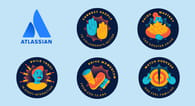Setapp Design Principles

- #Design Principles
- #Setapp
• 5 min read
In the previous article, we introduced the topic of design principles. To recap, design principles are a set of fundamental propositions that are essential to product success. Having design principles is vital for creating great products as they provide a vector for development and significantly speed up decision making.
Continuing the series, we want to get more practical, and this time we uncover design principles at Setapp.
So in plain words, design principles is a simple framework that describes specific goals crucial to the product’s success. Everyone in a team — whether working in design, development or distribution — can use the framework. The ultimate benefit of having well-aligned principles is a streamlined and consistent decision making process.
💡 A few simple principles or constructive questions will guide your team towards making the right decisions.
What are the design principles at other software companies?
Before going any further, let’s quickly review design principles at popular products: Spotify music streaming, Atlassian work management, and Adobe creative software.
Spotify

Atlassian

Adobe

Fun fact.. the most prominent software companies always put an emphasis on staying human, and MacPaw is no exception. Stay Human is the core value of our company as we help humans befriend technology.
What are the design principles at Setapp?

Let’s cut straight to the point: the three fundamental propositions of Setapp success are effectiveness, relevancy and humanity.
Effective
Fast validation, quality implementation – we believe that is the only way to be effective.
Relevant
Nothing for users without users – a simple principle that makes our decisions relevant.
Humane
Create a delightful experience – to make our product humane.
Let’s add some magic
For us, it’s really important that design principles are specific, meaning all statements have a clear connection to functionality, content and users.

The goal for us was to present our design principles in a non-pretentious and non-boring way. So to make the whole process more enjoyable and fun, we drew inspiration from Harry Potter. Being avid fans ourselves, we couldn’t help but notice that our principles resemble our beloved characters from the magical world:
- Effective as Hermione. Takes enough time to conduct robust research, finds perfect solutions, and can be creative in every stressful situation.
- Relevant as Severus Snape. Looks after users even when they don’t expect it. He challenges your assumptions, but ultimately proves himself to be reliable and trustworthy. Also, he is 100% adaptive.
- Humane as Hagrid. Warm and fuzzy communications. Always ready to teach, assist, and protect.
This approach made it easier to remember and work with these principles as we all know what these captivating personas stand for.
Setapp design principles in action
Let us provide you with some examples from where we use design principles.
Fast validation, smart implementation for effective decisions
- When designing a new landing page, we didn’t jump straight to high-cost development. Instead, we tested numerous alternatives in a Landing Page Builder (which takes far less effort), settled all the issues, and only then started working.
- When testing the idea of adding app reviews, we created a simple form to first understand whether our users would want to leave reviews.
Nothing for users without users for relevant decisions
- We audited our blog to feature only real and relevant use cases.
- Added the selection of most relevant apps for each user in the “Recommended for you” section.
- When starting the app for the first time on a new device, existing users get a popup to quickly install all their favorite apps with a one click.
Creating delightful experiences for humane decisions
- All in-app notifications use the most friendly language and tone of voice.
- The most straightforward and uncomplicated method of new app installs with a click of one button,
Outcomes
When aligned with reality and communicated across the team, design principles make the difference with the following benefits:
- save time and money
- retain users
- stay focused
- more productive arguments
However, integrating principles in your workflow and applying them everyday is a challenge on its own, and definitely deserves a separate article.
Conclusions
We, as a team, understand that not every idea or decision that may seem great to us can contribute equally to user experience or functionality. That's where design principles come in, helping us make important trade-offs that prioritize user satisfaction and ultimately lead to the product's success.
In our view, there’s nothing to lose and so much to gain when it comes to developing design principles. We definitely recommend every team use them!
This is an independent publication and it has not been authorized, sponsored, or otherwise approved by Warner Bros. Pictures, Spotify AB, Atlassian Corporation, Adobe Inc.








